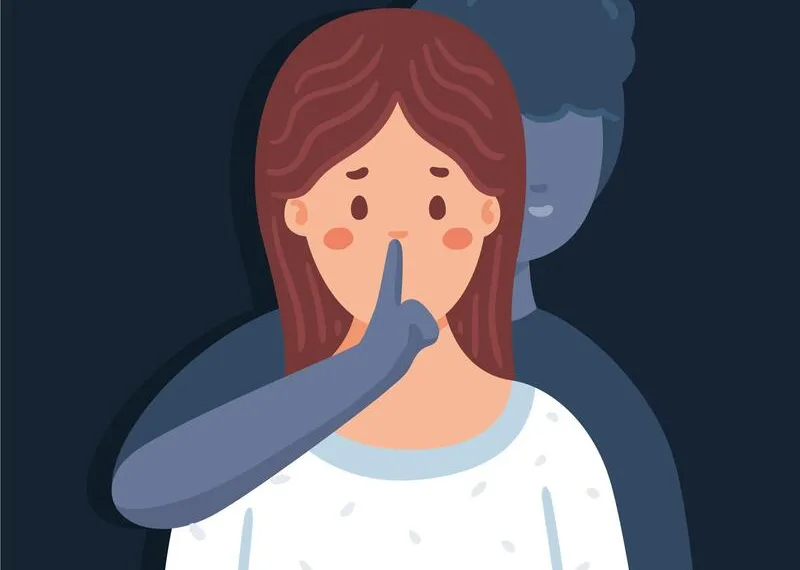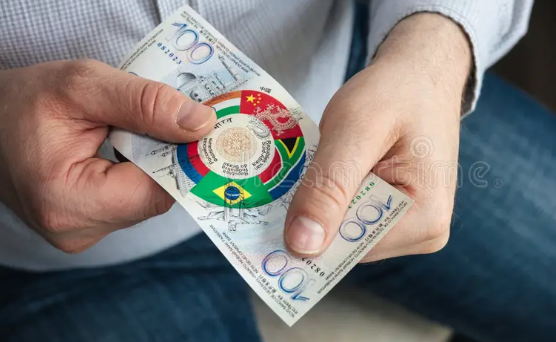
Introduction: Rape Cases in India
The incidence of rape cases in India is a deeply ingrained social issue at the center of the greatest democracy in the world. The country’s sexual assault environment is shaped by a complex interplay of historical, cultural, and socioeconomic elements, which extend beyond the startling figures. We must tackle this delicate subject with compassion, understanding, and a dedication to bringing attention to the many difficulties that survivors and the institutions put in place to assist them confront.
India, a country with a wide range of cultures and lively variety, is faced with a depressing reality: a high number of recorded rape cases. Even if the figures are concerning, they merely hint at a far larger issue that is entrenched in structural flaws, socioeconomic inequality, and centuries-old patriarchal attitudes. Even with strict legislation like the Criminal Law (Amendment) Act, 2013, which was passed in reaction to the notorious Delhi gang rape case, and the progressive legal framework in place, difficulties remain in converting legal provisions into meaningful justice for survivors.
But each number conceals a personal narrative, one of adversity, perseverance, and frequently a fight for justice. The challenges faced by victims of sexual assault are immense, ranging from victim-blaming and social shame to a lack of trust in the legal system. There are several obstacles in the way of reporting an attack and pursuing legal recourse, which are frequently made worse by a culture of silence and impunity.
Furthermore, how rape cases are portrayed in the media and public discourse has a significant impact on how people perceive these situations and how society reacts. To promote a more sympathetic and knowledgeable conversation, ethical engagement with the intricacies of sexual assault, sensitive portrayals of survivors, and responsible reporting processes must be followed.
In navigating this complex terrain, it is critical to look at the efforts and movements that are focused on prevention, victim assistance, and social change in addition to the difficulties. There are rays of optimism amid the gloom, from community-based organizations that offer essential assistance to survivors to educational programs that promote consent and gender equality.
Contextualizing the Issue: Understanding the Root Causes:
Rape is a heinous crime that inflicts profound physical and psychological trauma on its survivors, is not merely an isolated act of violence but a symptom of deeper societal issues. In the context of India, several interrelated factors contribute to the prevalence of rape cases:
1. Patriarchal Norms and Gender Inequality: Similar to several other countries, India has the challenge of enduring patriarchal customs that sustain gender disparity. Women’s autonomy and agency are often ignored, and they are generally seen as inferior to males. Because of this disparity in authority, rape and other acts of sexual violence are tolerated in this society.
2. Socio-economic Disparities: Poverty and lack of access to education and economic opportunities exacerbate the vulnerability of women and marginalized communities to sexual violence. Economic disparities not only limit women’s ability to assert their rights but also restrict their access to legal recourse and support services in the aftermath of an assault.
3. Cultural Factors and Attitudes Towards Women: Rape culture is greatly aided by cultural views towards women that are influenced by tradition, religion, and social standards. Victim-blaming, slut-shaming, and the concept of “honor” tend to discourage survivors from coming forward with their stories and pursuing legal action. Furthermore, a society that normalizes and devalues sexual violence is influenced by dominant ideas of masculinity that link power and domination with sexual conquest.
4. Flaws in the Legal System: Although India has passed progressive laws to combat sexual assault, such as the Criminal Law (Amendment) Act, 2013, and modifications to the Indian Penal Code, enforcement and implementation of these laws continue to be significant obstacles. Access to justice is further hampered by insufficient training for law enforcement personnel, insufficient time for legal procedures, and insensitivity to survivors.
5. Systemic Barriers for Marginalized Communities: Women from underrepresented groups, such as Dalits, Adivasis, and religious minorities, experience several types of discrimination that increase their susceptibility to sexual assault. Caste-based violence and systematic marginalization are examples of discriminatory practices that make it more difficult for survivors from these groups to seek justice and support services.
6. Media Portrayal and Social Norms: Media representations significantly shape the public’s perspective of rape incidents. Reports that sensationalize sexual assault, tell stories that blame the victim, and minimize the crime all contribute to a culture of impunity and negative stereotypes. Furthermore, beliefs that support and normalize rape are further reinforced by the persistence of regressive gender standards in popular culture.
Challenges in Reporting Rape Cases in India:
Reporting a rape or sexual assault is often an incredibly difficult decision for survivors, particularly in the context of India where various societal, cultural, and systemic barriers hinder the reporting process. Understanding these challenges is crucial for addressing the issue effectively:
1. Stigma and Shame: The widespread shame and stigma attached to sexual assault are among the biggest obstacles survivors must overcome. In Indian society, victims of rape frequently encounter criticism, exclusion, and victimization from both their communities and even law enforcement officers. This stigma may deter survivors from coming forward and asking for the justice they deserve.
2. Fear of Retaliation: If survivors disclose the incident, they could fear reprisals from their attackers or communities. In situations when the offender is in a position of authority or influence—such as in the family, community, or workplace—this anxiety is more acute. Survivors may be discouraged from asking for assistance or reporting the crime out of fear of more abuse or societal ramifications.
3. Lack of Trust in Law Enforcement: Because of a history of incompetence, insensitivity, and corruption in the criminal justice system, many survivors have little faith in the police. Survivors’ confidence in pursuing legal action is further undermined by reports of police indifference, victim-blaming, and refusal to file occurrences of sexual abuse.
4. Cultural and Societal Barriers: Survivors are frequently dissuaded from reporting sexual assault and rape due to cultural customs and societal views towards these crimes. Conventional wisdom on honor, shame, and chastity can breed victimization and prevent survivors from coming forward for fear of ruining their names or embarrassing their families.
5. Legal and Procedural Obstacles: For survivors, navigating the legal system may be extremely difficult, particularly when the proceedings are drawn out, complicated, and traumatically repetitive. Survivors may run against obstacles that deter them from filing a lawsuit, such as a lack of legal counsel, insufficient support services, and drawn-out court cases.
6. Lack of Awareness and Education: Underreporting of sexual assault is a result of a lack of knowledge about the laws, rights, and support resources that are available. Many survivors may be unaware of their legal rights or where to turn for assistance, especially in isolated and rural areas with limited resources and information.
7. Underreporting in Marginalized Communities: Due to institutionalized prejudice, limited access to justice, and fear of retaliation, marginalized communities—such as Dalits, Adivasis, and religious minorities—face extra obstacles when it comes to reporting sexual abuse. Underreporting in these groups is made worse by societal marginalization and historical distrust of law enforcement.

Legal Processes and Conviction Rates in Rape Cases in India
Legal Processes:
-
Filing a Complaint:
- The legal process for rape cases in India typically begins with filing a First Information Report (FIR) with the police.
- Survivors or their representatives can file a complaint at any police station, and the police are required to register the FIR immediately.
-
Investigation:
- Once the FIR is registered, the police are responsible for conducting a thorough investigation into the allegations.
- This includes gathering evidence, recording statements of witnesses, and collecting medical and forensic evidence from the survivor.
-
Trial:
- After the investigation is complete, the case is presented before a court of law.
- The trial involves presenting evidence, examining witnesses, and cross-examining the accused and witnesses.
- The survivor is provided with legal representation and support throughout the trial process.
-
Conviction:
- If the court finds the accused guilty beyond a reasonable doubt, they are convicted and sentenced according to the law.
- The severity of the punishment varies depending on the circumstances of the case and may include imprisonment, fines, or other penalties.
Conviction Rates:
-
Low Conviction Rates:
- Despite legal provisions and efforts to improve the justice system, conviction rates for rape cases in India remain low.
- Various factors contribute to this, including delays in the legal process, lack of evidence, and challenges in proving guilt beyond a reasonable doubt.
-
Challenges in Prosecution:
- Prosecuting rape cases can be challenging due to issues such as inadequate collection and preservation of evidence, inconsistencies in witness testimony, and delays in the trial process.
- Survivors often face difficulties in providing evidence, especially in cases of acquaintance rape where there may be a lack of physical evidence.
-
Underreporting and Social Stigma:
- Underreporting of rape cases due to social stigma and fear of retaliation contributes to low conviction rates.
- Many survivors choose not to report the crime or withdraw their complaints due to societal pressure, further reducing the likelihood of conviction.
-
Improvements in Legal Framework:
- Efforts have been made to improve the legal framework for addressing sexual violence in India, including amendments to the Indian Penal Code and the Criminal Law (Amendment) Act, 2013.
- These amendments have introduced stricter penalties for sexual offenses and measures to expedite the trial process.
Support Systems for Survivors of Rape and Sexual Assault in India:
In the wake of such horrible acts, survivors of rape and sexual assault in India frequently experience severe physical, emotional, and psychological damage. Survivors need to have access to comprehensive support services to overcome obstacles and start the healing process. Numerous organizations and support networks in India provide a variety of services designed to address the various needs of survivors:
1. Crisis Intervention Centers:
- Crisis Intervention Centres (CICs) have been set up in many Indian states to offer urgent support and aid to victims of sexual assault and rape.
- These centers provide survivors and their families with crisis counseling, medical treatment, legal advice, and psychosocial support.
2. Rape Crisis Centers:
- Specialized institutions known as Rape Crisis Centres (RCCs) offer survivors of sexual violence complete support services.
- In addition to counseling, medical and legal support, 24/7 helplines, and shelter facilities for survivors in need of short-term housing, these centers usually offer other services.
3. Non-Governmental Organizations (NGOs):
- Helping victims of sexual assault and rape is the constant focus of several non-governmental organizations in India.
- These organizations, such as legal help, medical support, counseling, housing, job training, and assistance with rehabilitation offer numerous services.
4. Legal Aid Services:
- Judicial aid services are necessary for survivors to navigate the judicial system and seek justice.
- Legal counseling, court representation, help in filing complaints, and taking legal action are all provided to survivors by legal aid cells and organizations at no cost or a reduced cost.
5. Psychosocial Support and Counseling:
- Counseling and psychosocial assistance are essential for survivors to manage the trauma of sexual assault.
- Survivors get individual and group counseling sessions from mental health specialists, counselors, and therapists who attend to their emotional and psychological needs.
6. Helplines and Online Support Services:
- Survivors can utilize a discreet and easily accessible venue to seek information and aid through helplines and online support programs.
- These programs include emotional support, resource information, and advice on how to get legal and medical help.
7. Government Initiatives:
- The Indian government has started several programs and efforts to assist victims of sexual assault.
- Through initiatives like the Nirbhaya Fund, One Stop Centres (OSCs), and Victim Compensation Schemes, survivors can get financial help, medical care, legal counsel, and rehabilitation programs.
Media Representation and Public Discourse on Rape Cases in India:
1. Influence of Media Coverage:
- Media coverage plays a significant role in shaping public perceptions and attitudes towards rape cases in India.
- Sensationalist reporting, graphic details, and sensationalized headlines can contribute to the stigmatization and re-victimization of survivors.
2. Victim-Blaming Narratives:
- Media often perpetuates victim-blaming narratives by focusing on the behavior and character of the survivor rather than the actions of the perpetrator.
- Victim-blaming narratives contribute to the culture of silence and shame surrounding sexual violence, discouraging survivors from reporting the crime.
3. Impact on Public Opinion:
- Media coverage can influence public opinion and shape societal responses to rape cases.
- Biased or sensationalized reporting can fuel misconceptions and stereotypes about sexual violence, contributing to victim-blaming attitudes and skepticism toward survivors.
4. Responsible Reporting Practices:
- Responsible reporting practices are essential for ethical and sensitive coverage of rape cases.
- Media organizations should prioritize survivor-centered narratives, avoid sensationalism, and refrain from disclosing identifying information about survivors without their consent.
5. Role of Social Media:
- Social media platforms have become powerful tools for shaping public discourse on rape cases.
- Social media activism, hashtag campaigns, and online movements have raised awareness about sexual violence and provided platforms for survivors to share their stories.
6. Influence on Policy and Legislation:
- Media coverage can influence public opinion and pressure policymakers to enact reforms addressing sexual violence.
- High-profile cases and media scrutiny often lead to calls for legislative changes, increased funding for support services, and reforms in the criminal justice system.
7. Need for Sensitivity and Ethical Reporting:
- Ethical reporting of rape cases requires sensitivity, empathy, and adherence to journalistic ethics.
- Media organizations should prioritize survivor consent, avoid sensationalism, and provide accurate and balanced coverage that respects the dignity and privacy of survivors.
8. Community Education and Awareness:
- Media can play a crucial role in educating the public about consent, gender equality, and the impact of sexual violence on survivors and communities.
- Responsible reporting can contribute to changing societal attitudes, challenging rape myths, and fostering empathy and support for survivors.
Initiatives for Prevention and Education on Rape Cases in India:
1. Government Programs:
- The Government of India has launched various programs and initiatives aimed at preventing and addressing sexual violence, including rape.
- The National Mission for Empowerment of Women (NMEW) focuses on gender equality and women’s empowerment, including initiatives to prevent violence against women.
- The Ministry of Women and Child Development implements schemes such as the Beti Bachao Beti Padhao (Save Girl Child, Educate Girl Child) program, which aims to address gender discrimination and promote education for girls.
2. Comprehensive Sex Education:
- Comprehensive sex education plays a crucial role in preventing sexual violence by promoting healthy relationships, consent, and gender equality.
- Some organizations and schools in India have implemented comprehensive sex education programs that cover topics such as puberty, reproductive health, gender norms, and consent.
3. Awareness Campaigns:
- Various organizations and government agencies run awareness campaigns to educate the public about sexual violence and promote gender equality.
- Campaigns such as “Beti Bachao, Beti Padhao,” “Nirbhaya Campaign,” and “HeForShe” aim to raise awareness about the importance of women’s rights and the need to end violence against women.
4. Community-Based Interventions:
- Community-based interventions involve engaging communities in preventing and addressing sexual violence through awareness-raising, advocacy, and capacity-building activities.
- Non-governmental organizations (NGOs) and community groups often implement programs that focus on empowering women, challenging gender norms, and promoting community solidarity against sexual violence.
5. Legal Literacy Programs:
- Legal literacy programs aim to educate individuals, especially women and marginalized communities, about their rights and legal options in cases of sexual violence.
- These programs provide information on relevant laws, legal procedures, and available support services to empower survivors and their communities.
6. Technology-Based Solutions:
- Technology-based solutions, such as mobile apps and online platforms, can play a role in preventing and responding to sexual violence.
- Some organizations have developed mobile apps that provide information on sexual violence prevention, support services, and reporting mechanisms.
7. Engaging Men and Boys:
- Engaging men and boys in efforts to prevent sexual violence is essential for promoting gender equality and challenging harmful gender norms.
- Programs such as “MenEngage” and “Men Against Rape and Discrimination (MARD)” aim to involve men and boys as allies in ending sexual violence and promoting gender equality.
8. School-Based Programs:
- School-based programs play a crucial role in preventing sexual violence by promoting gender equality, consent, and respectful relationships among students.
- Some schools in India have implemented programs that incorporate comprehensive sex education, gender sensitization, and life skills training to prevent sexual violence.

Case Studies and Personal Stories:
Case Study 1: The Nirbhaya Case
In December 2012, a 23-year-old student of physiotherapy was gang-raped and killed in a moving Delhi bus. This incident is known as the Nirbhaya case. India saw massive demonstrations and public outcry in response to this horrific attack, which resulted in important changes to the country’s laws against sexual assault. Jyoti Singh, the victim, heroically battled for several days before giving up due to her wounds. The offenders were taken into custody, put on trial, and given a hanging death sentence. The Nirbhaya case raised awareness of sexual assault in India on a global scale and resulted in the 2013 Criminal Law (Amendment) Act, which increased the severity of penalties for sexual offenses.
Case Study 2: The Kathua Rape Case
In the January 2018 Kathua rape case, an eight-year-old girl was abducted, raped, and killed in the Jammu and Kashmir region of Kathua. The victim was a member of a nomadic Muslim group who was kidnapped, drugged, and imprisoned in a temple where she had several rapes over several days before being ruthlessly killed. The case caused national indignation and apprehensiveness over children’s protection and security, especially in places impacted by war. Eight persons were taken into custody and accused of the crime, including a former government official and other police personnel. The trial attracted a lot of media attention and brought to light the pervasive casteism and communalism in Indian culture.
Personal Story 1: A Survivor's Journey to Justice
A survivor who wishes to remain anonymous describes her quest for justice following a childhood sexual assault by a family member. She had to summon the bravery to report the incident to the police despite her family’s incredulity and blaming. However, the legal process was difficult, fraught with obstacles and several delays. She saw her offender found guilty and imprisoned after a long battle and assistance from a local non-governmental organization that specializes in victim advocacy. Her experience emphasizes the value of victim support programs and the requirement for a more adaptable and survivor-focused justice system.
Personal Story 2: Breaking the Silence - A Survivor's Story
After suffering in secret for years, Rajesh—a survivor of sexual assault—shares his story of breaking the silence and getting help. Rajesh encountered particular difficulties because he was a male survivor, such as stigma and conventional preconceptions about male victims. He was able to face his pain and speak out against sexual abuse with the support of therapy and support groups. The idea that sexual violence only affects women is called into question by Rajesh’s experience, which also emphasizes the significance of speaking out against male victimization.
Recent Rape Cases in India
Ajmer, Rajasthan: A man convicted of raping a 5-year-old neighbor girl was given a life term and fined ₹70,000. The victim was discovered outside the village in poor condition on June 1, 2023, marking the date of the crime.
Delhi: A girl’s “friend” is accused of raping, beating, and throwing her close to the Dabri Metro Station in southwest Delhi. The accused has been detained and charged after getting to know the kid on social media.
Alwar, Rajasthan: A 24-year-old patient who was brought to a private hospital’s intensive care unit in the Alwar district is accused of being sexually assaulted by a nurse aide. The event happened when the survivor received an injection that made her unconscious. After being taken into custody, the accused is presently being questioned.
Kotputli-Behror District: In this district, a brother and a rape survivor were attacked. The principal defendant made a suicide attempt. Politicians have paid the survivor in the hospital visits as a result of the tragedy, which has garnered attention.
Vadodara, Gujarat: A 56-year-old woman was gang-raped by three people, who were taken into custody. The accused heard the woman talking to someone about how she needed a job. They had intended to escape the city when they were captured.
International Perspectives and Comparisons on Rape Cases
1. Legal Framework:
- Different countries have varying legal frameworks and definitions of rape, which can influence reporting rates, prosecution, and conviction rates.
- For example, some countries may have broader definitions of rape that encompass a wider range of sexual acts, while others may have narrower definitions that exclude certain forms of sexual violence.
2. Reporting Rates:
- Reporting rates for rape cases vary significantly across countries and are influenced by factors such as cultural attitudes towards sexual violence, trust in law enforcement, and accessibility of support services.
- In some countries, societal stigma and fear of retaliation may deter survivors from reporting rapes to the authorities, leading to underreporting.
3. Prosecution and Conviction Rates:
- Prosecution and conviction rates for rape cases also vary widely between countries and are influenced by factors such as the effectiveness of the legal system, availability of evidence, and resources allocated to law enforcement and judicial processes.
- Some countries may have higher conviction rates due to more robust legal systems and support services for survivors, while others may struggle with low conviction rates due to systemic challenges and barriers faced by survivors.
4. Support Services for Survivors:
- The availability and quality of support services for survivors of rape also vary across countries.
- Some countries may have well-established support networks, including crisis centers, counseling services, and legal aid organizations, while others may have limited resources and access to support services for survivors.
5. Cultural and Societal Attitudes:
- Cultural and societal attitudes towards rape and sexual violence can differ significantly between countries and influence how survivors are perceived and treated by their communities and the legal system.
- In some countries, rape survivors may face stigma and victim-blaming attitudes, while in others, there may be greater support and empathy for survivors.
6. Government Policies and Initiatives:
- Government policies and initiatives to address rape cases vary between countries and can range from legal reforms and public awareness campaigns to the allocation of resources for support services and survivor advocacy.
- Some countries may have comprehensive national strategies for preventing and responding to sexual violence, while others may have limited or fragmented approaches.
Conclusion
India continues to have a high rate of rape cases, which is a serious social problem that needs immediate attention and coordinated action. The prevalence of sexual assault persists despite initiatives to improve awareness, bolster legal frameworks, and improve support services. This emphasizes the necessity of making extensive and ongoing efforts to combat this scourge.
Rape in India is a problem that stems from deep-rooted socioeconomic disparities, cultural attitudes, and systemic flaws. This is evident in the numerous untold stories of survivors striving to achieve justice, as well as the notorious Nirbhaya case that rocked the country. It may be extremely difficult for survivors to report attacks, navigate the legal system, and get support services. These challenges are frequently made worse by stigma, victim-blaming, and a culture of silence.
Although there have been governmental measures and legal reforms to combat sexual assault, there are still many obstacles to overcome in terms of execution. Low reporting rates, poor prosecution, and pitifully low conviction rates are all caused by the discrepancy between the letter and the spirit of the law and the way it is applied, in addition to the structural obstacles that survivors must overcome.
Nevertheless, there are rays of optimism among these difficulties. Survivor advocacy groups, civil society initiatives, and grassroots organizations are putting in a lot of effort to push for systemic change, raise awareness, and offer assistance. A culture of consent and respect is being fostered, stereotypes are being contested, and people are being empowered using community-based interventions, comprehensive sex education programs, and creative technology-based solutions.
Going forward, combating the pandemic of rape cases in India will necessitate a multimodal strategy that tackles the underlying reasons, fortifies the judicial system, improves support services, and encourages a cultural shift in the way people see sexual assault. Governmental authorities, law enforcement, civil society organizations, and the general public must work together to build a society in which every person—regardless of gender—can live without having to worry about sexual assault.
We must prioritize the well-being of survivors, provide a voice to them, and respect their rights in all facets of our response to sexual assault as we work towards this common objective. India may make progress towards building a more secure and equitable society for all by supporting gender equality, encouraging a survivor-centered approach, and opposing social practices that uphold the culture of rape.
6,274 allegations of domestic abuse were filed after this. According to the data, there were 4,797 reports of dower harassment, 2,349 of molestation, 1,618 complaints of police indifference towards women, and 1,537 allegations of rape and attempt to rape.
Over thirty-one thousand incidences of rape were recorded in India in 2022. In comparison to the prior year, there was a little decline in the number of rape cases.




Thanks for this content we must appreciate this
Thank you for your sharing. I am worried that I lack creative ideas. It is your article that makes me full of hope. Thank you. But, I have a question, can you help me?
I don’t think the title of your article matches the content lol. Just kidding, mainly because I had some doubts after reading the article.